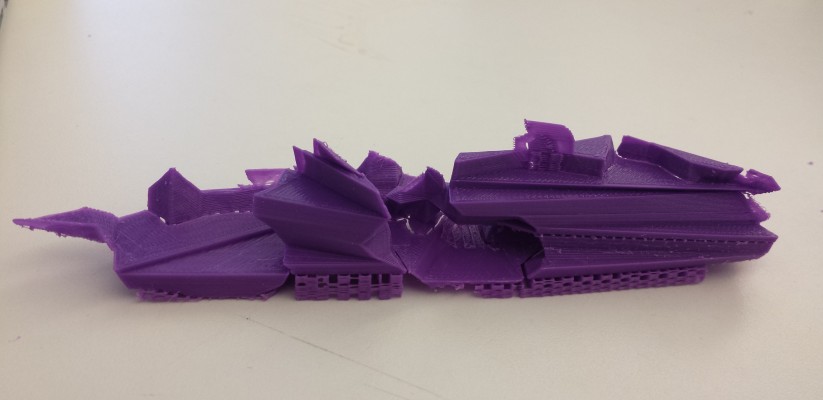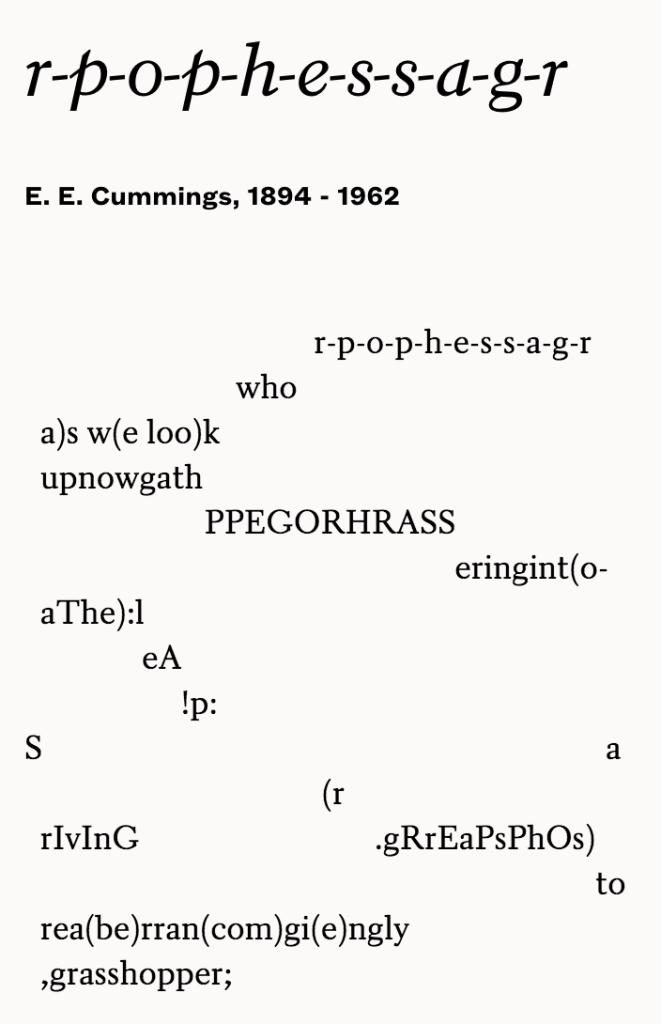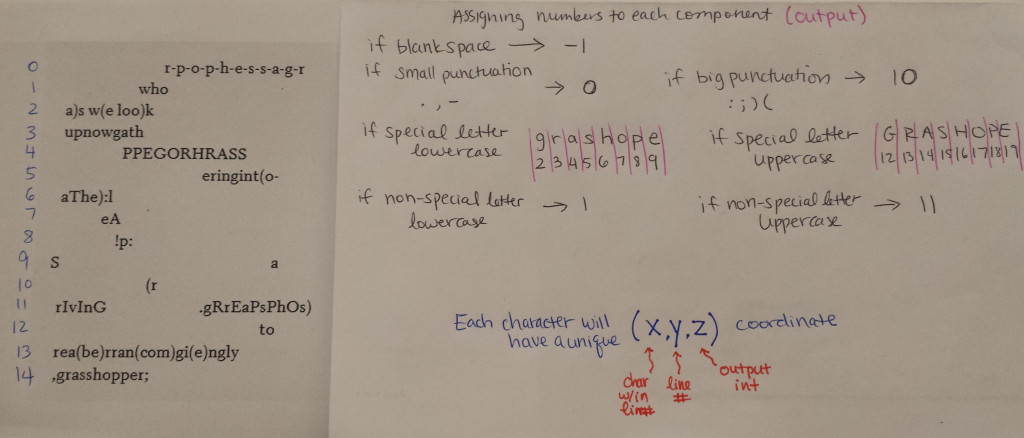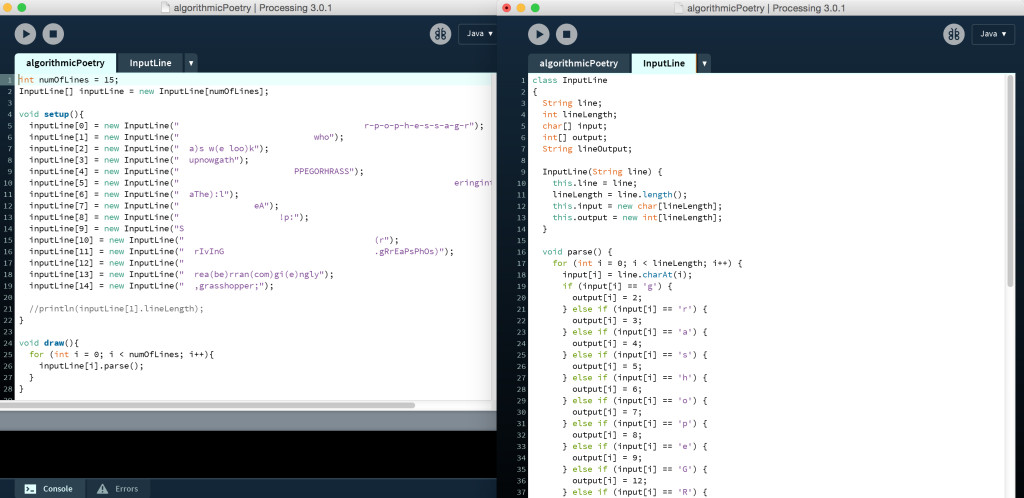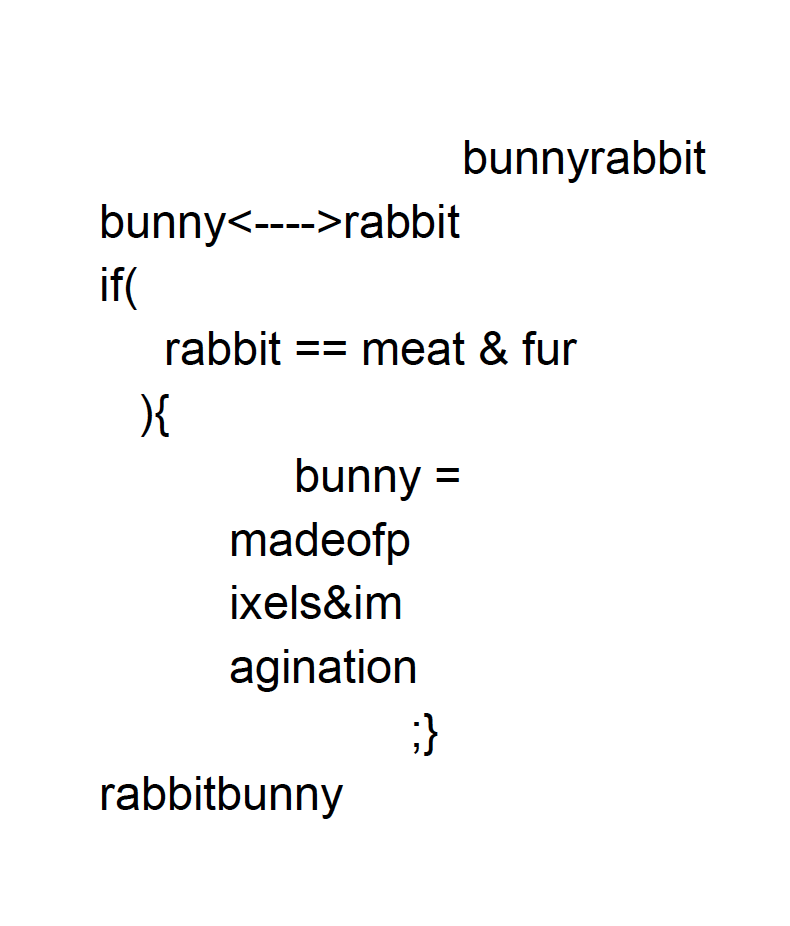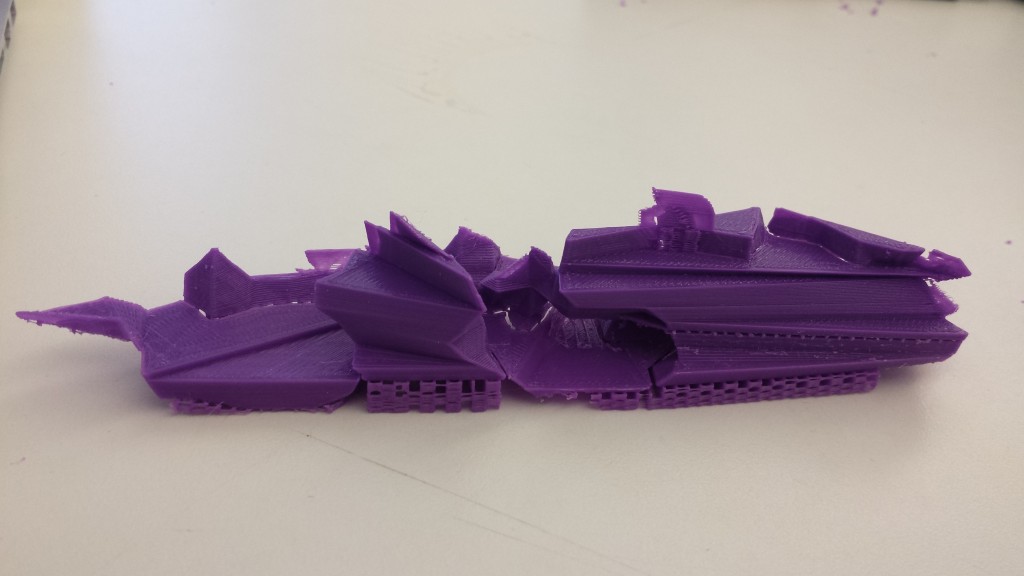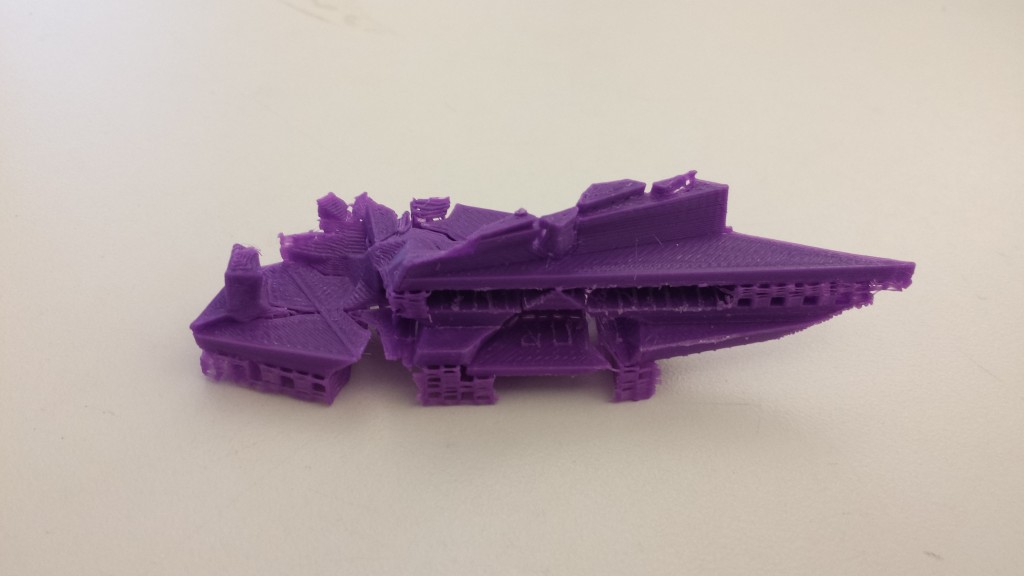Miri – Self Portrait
I went through a pretty peculiar process to get to my self-portrait.
I knew that we needed to use Grasshopper for the execution of the project. With this engrained in my mind, the association that I couldn’t shake out of my head was my favorite poem by e.e. Cummings, titled r-p-o-p-h-e-s-s-a-g-r, or colloquially known as grasshopper:
This poem, which I was exposed to in high school and incidentally became my favorite poem since, became the basis for my self portrait. I felt that a poem as input would be a great abstract way of creating a self portrait that depicts not my physical likeness but a mental or spiritual representation. My goal hence was to take in a poem as input to an algorithm that would generate a 3D sculpture that embodies the structure and spirit of the poem. This particular poem was an interesting case study, since the many interpretations to the poem point to the spatial arrangement of a medium that conventionally relies on a temporal flow. The central word “grasshopper” is jumbled up and recurring, as if jumping all over the page. There are many sources on the internet for a more thorough interpretation.
After considering many additional factors to what makes the poem work, such as parts of speech and fragmentation of words, the main elements I decided to focus on were the ways in which the letters of the word “grasshopper” were scattered throughout the poem, the blank spaces, punctuation, and lowercase/uppercase letters that compete for visual space throughout the lines. The main rules that I established sought to take the index within a line, the line number, and the translated output of each character to generate x,y,z coordinates for the creation of a 3D sculpture.
My goal was to create an algorithm based off of my favorite poem and then write a poem of my own, that would feed into the poem-to-sculpture algorithm to generate a “self-portrait”.
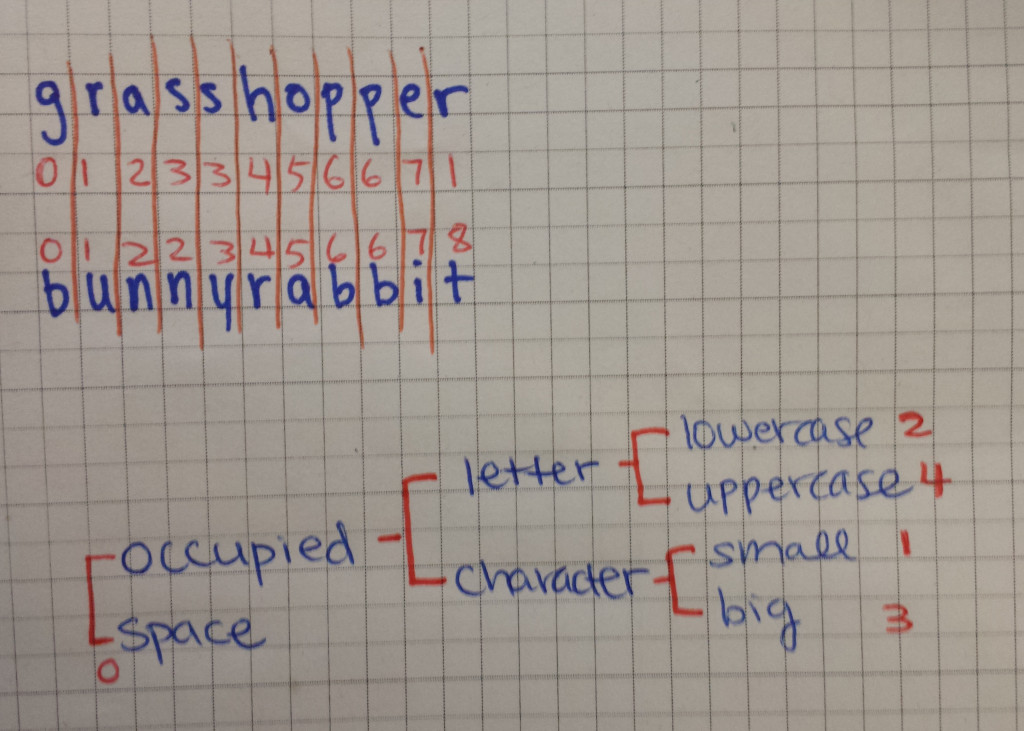
The key word of my own poem, “bunnyrabbit” closely fit the structure of the base poem’s “grasshopper”. In both cases, the value of each element’s output would be ranked in numbers, in increasing order of: space, small character, lowercase letter, big character, uppercase letter, lowercase keyword letter, uppercase keyword letter.
I set myself the following design values:
- show motion
- generate a surprising result
- have a visible correspondence to the subject/structure/theme of the poem.
I knew that I would end up with something experimental and possibly amorphous but I was at the point of no return and decided to run with it even if it didn’t print nicely.
I used processing to structure my algorithm and extracted the data generated from the output into grasshopper:

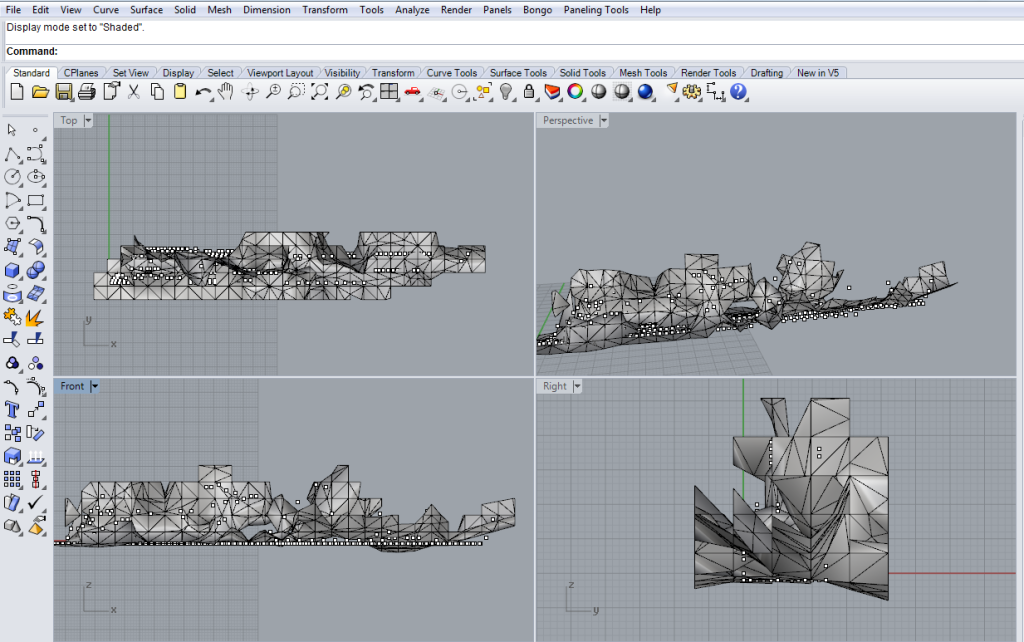
I proceeded to create a second set of inputs and outputs, using my own poem, bunnyrabbit, as the source of data.
(The poem looks a bit like code)
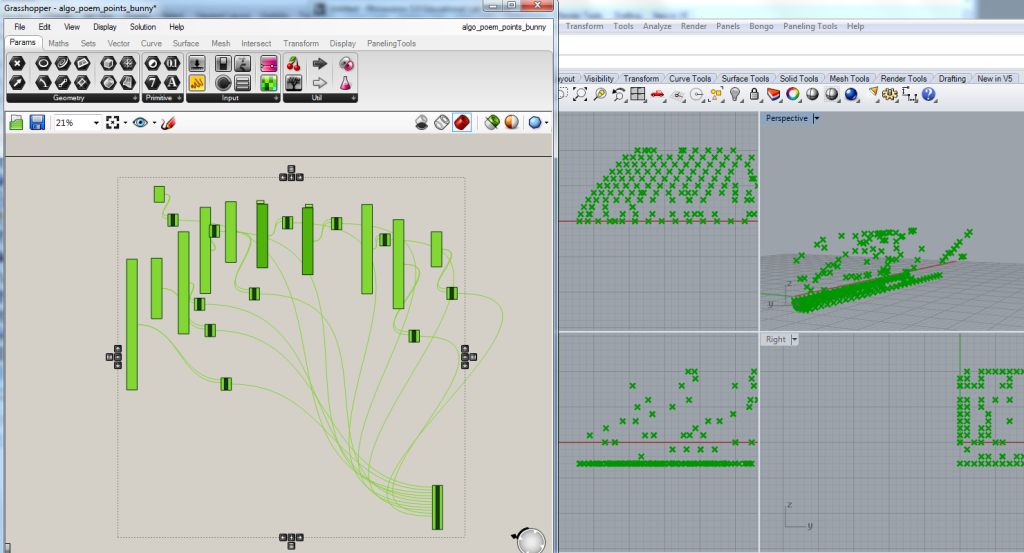
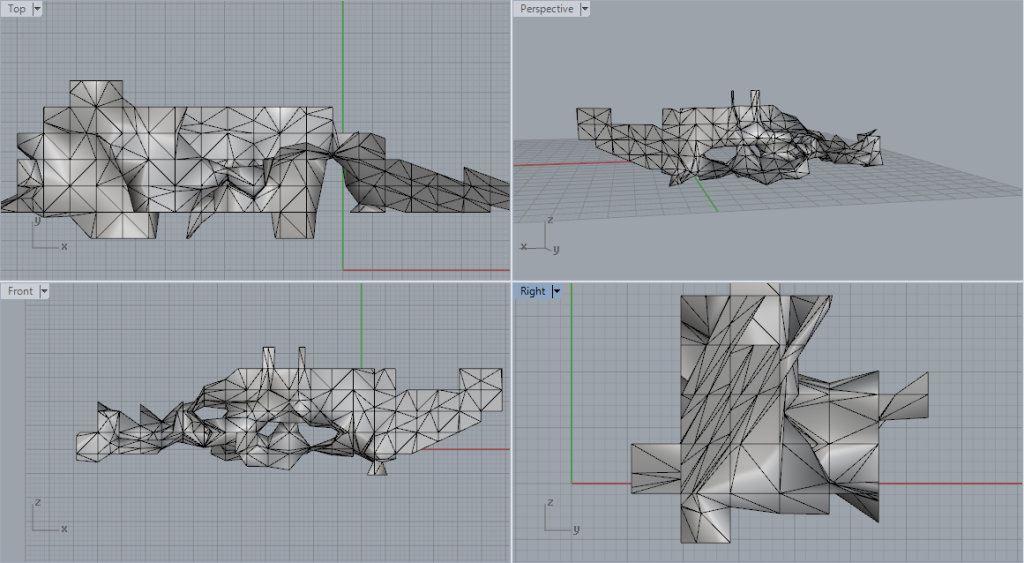
The grasshopper/rhino problems I ran into prevented me from creating more meaningful shapes at each point of data, so I decided to triangulate all the points into one mesh, creating a low-poly abstract piece.
Interestingly, the algorithm acted like a sort of random seed, generating architectural structures.
I was happier with the grasshopper print, since the algorithm mimicked the motion and space implied by the poem. The bunnyrabbit output seemed a bit more random, since the theme of the poem did not align with random motion and arrangement of space. The approach to dealing with the data could be taken in many different directions. I would definitely like to work on this process further, in future iterations trying more than just generating a mesh from the points.
